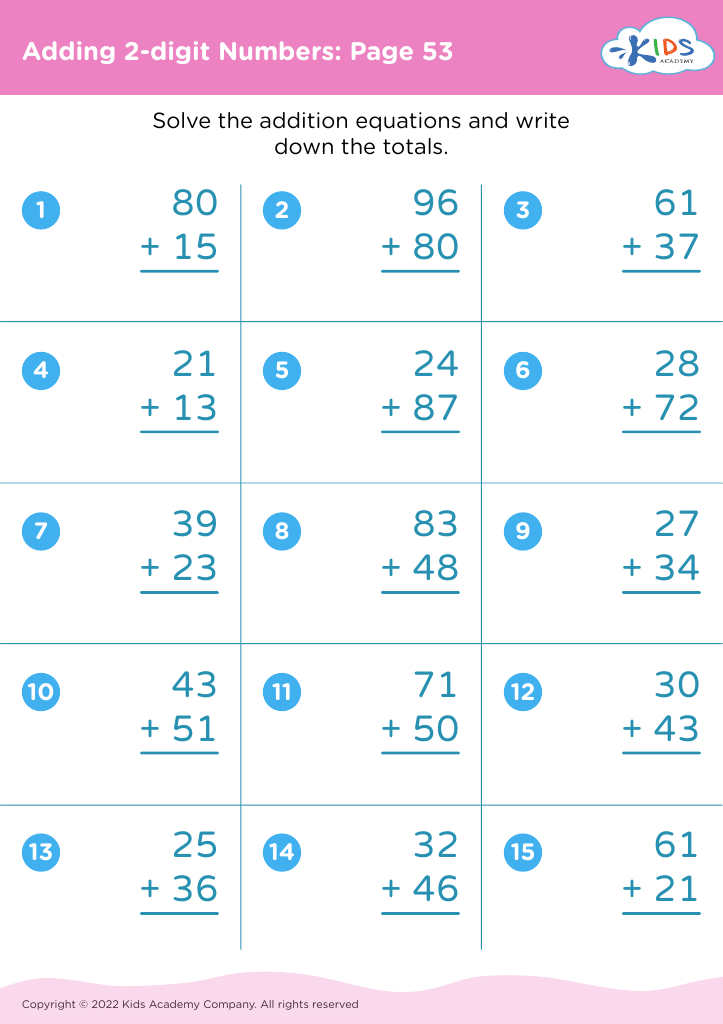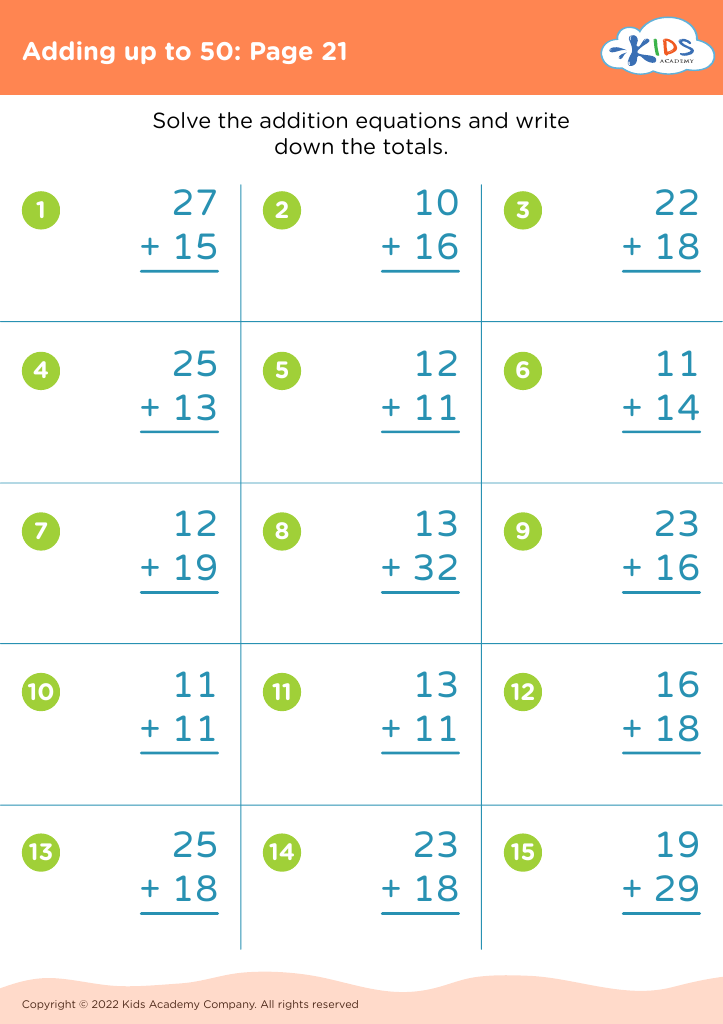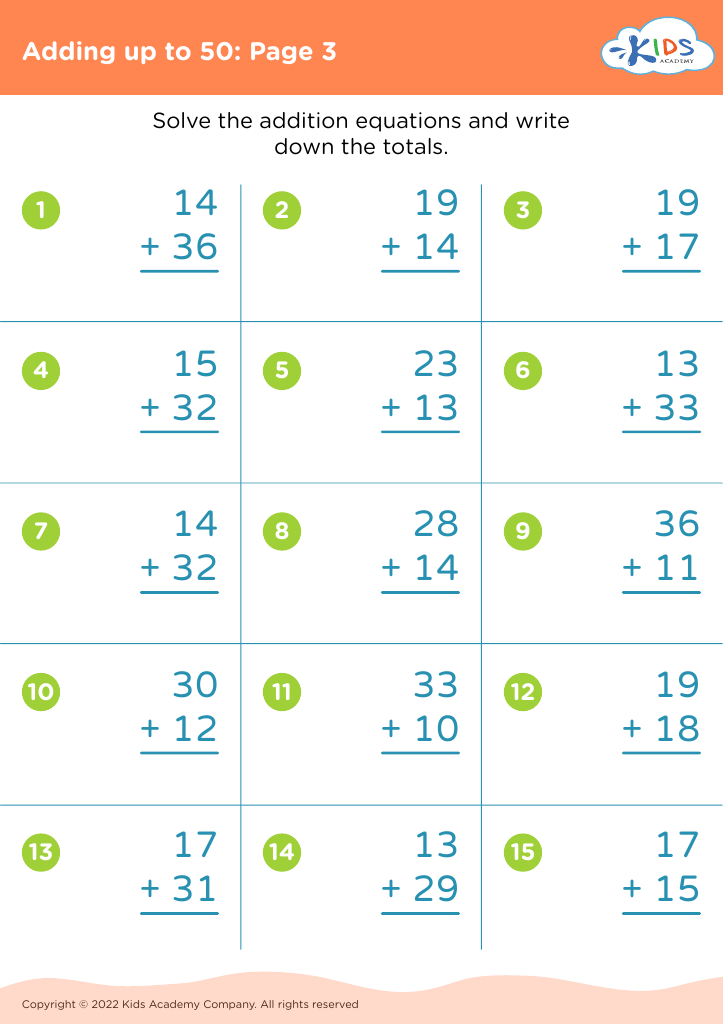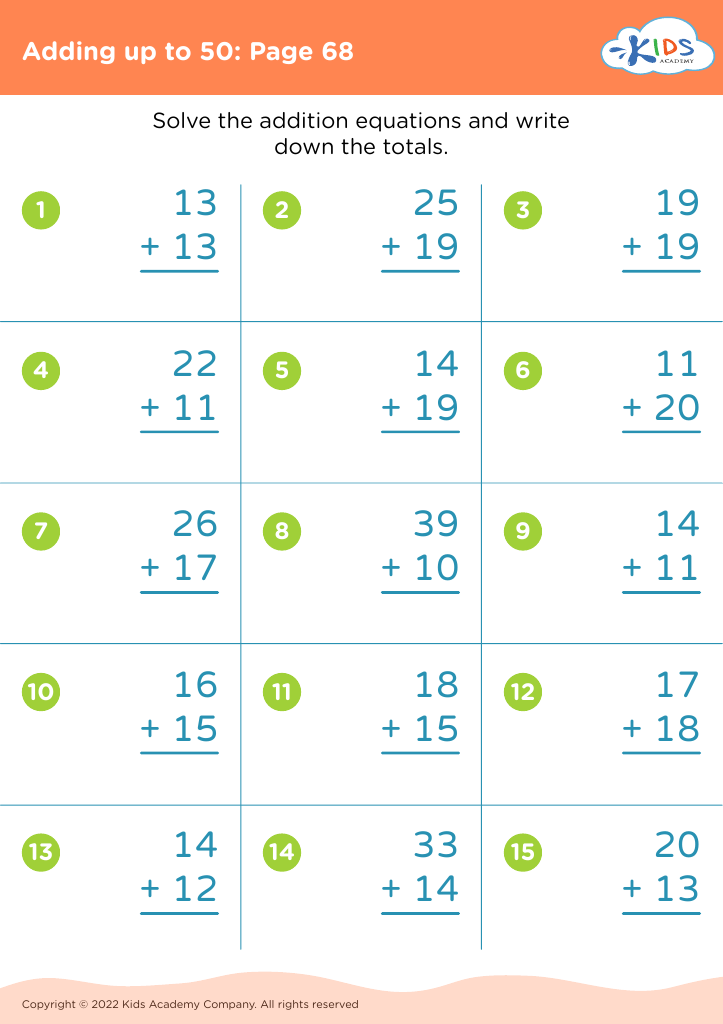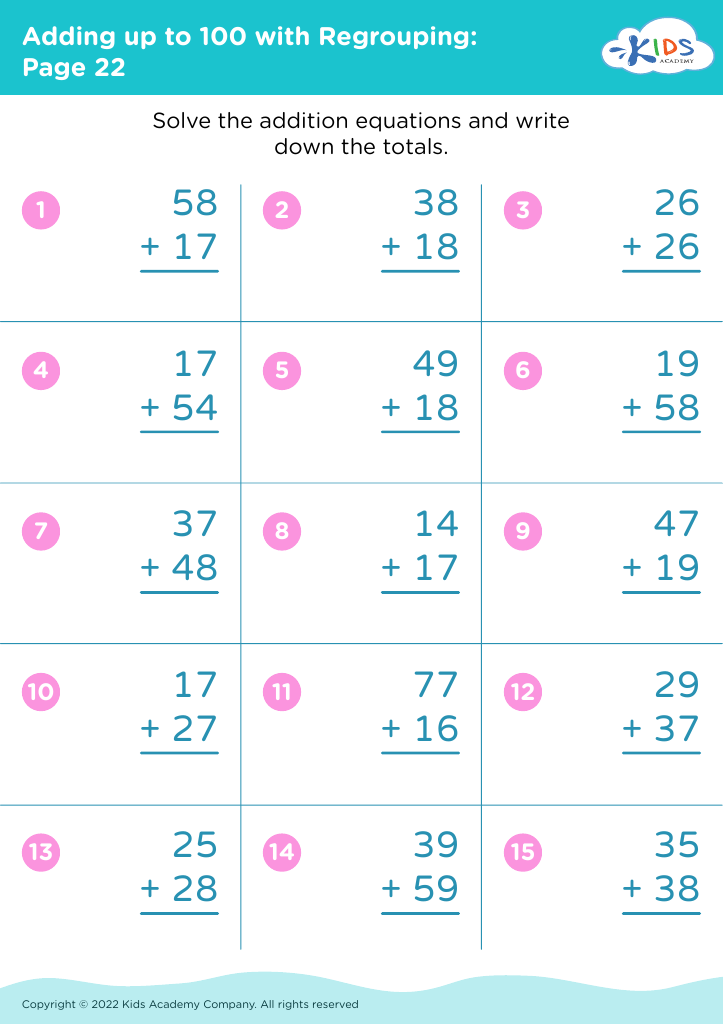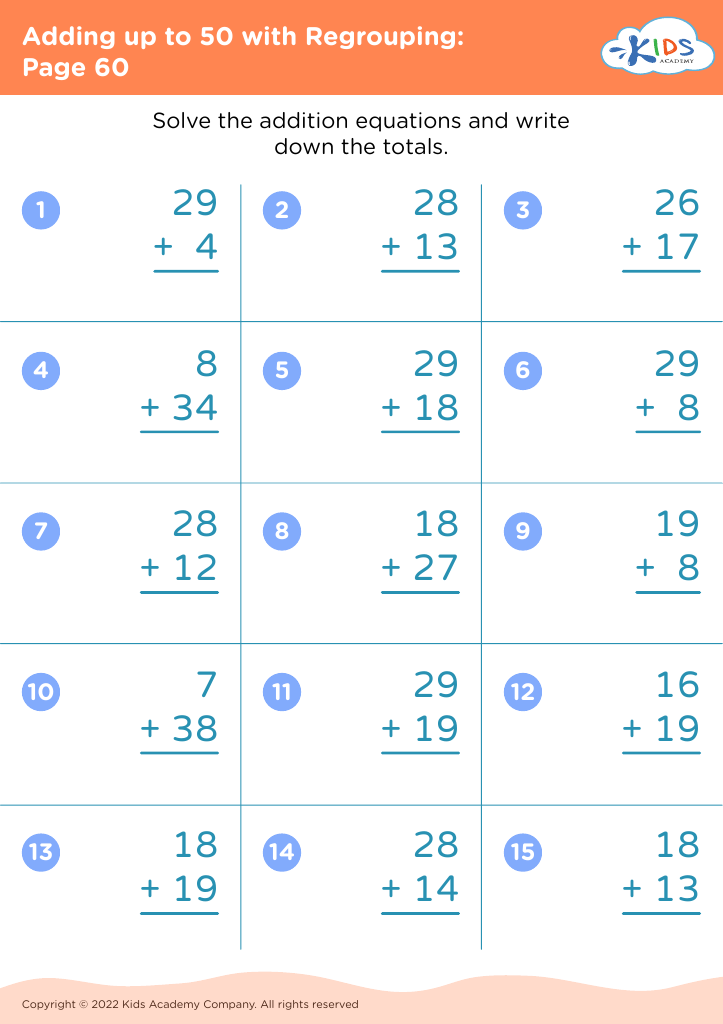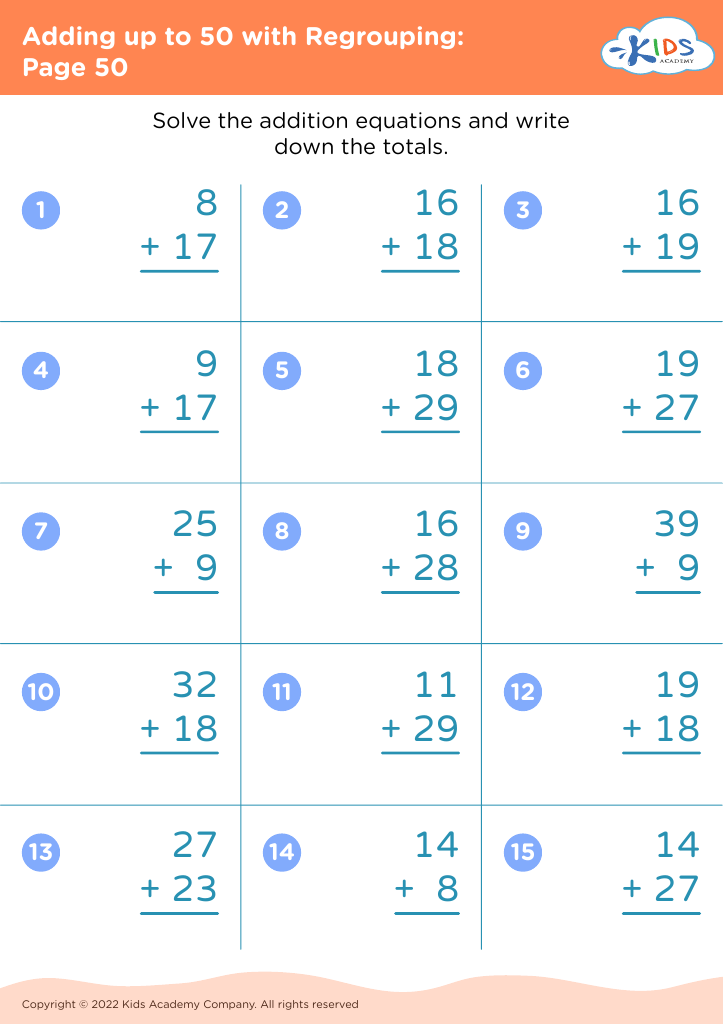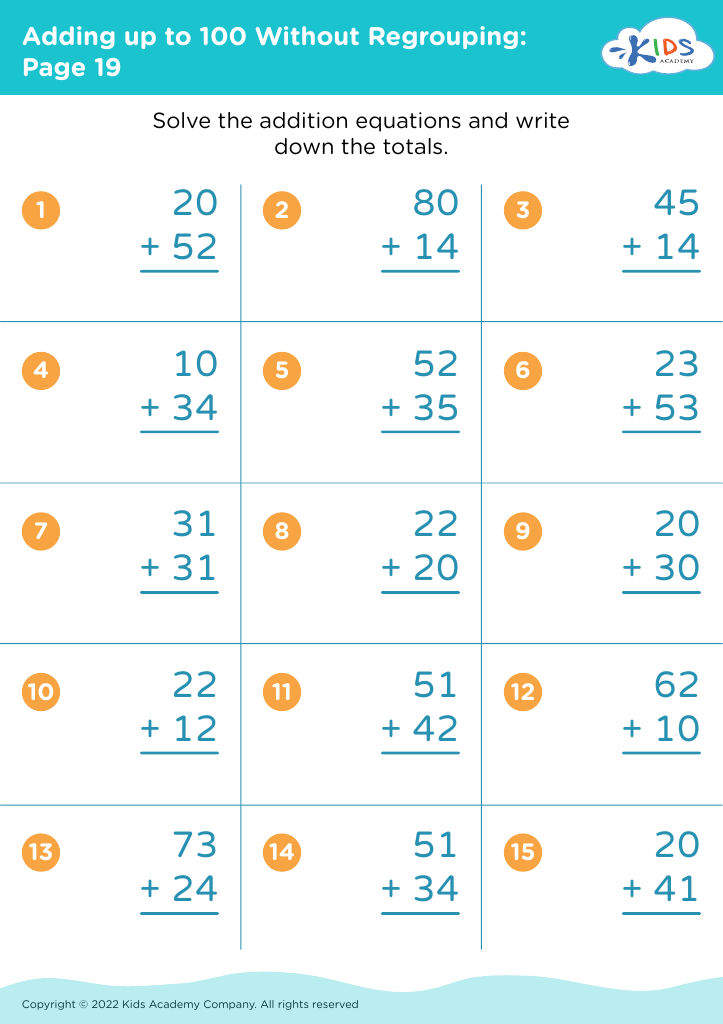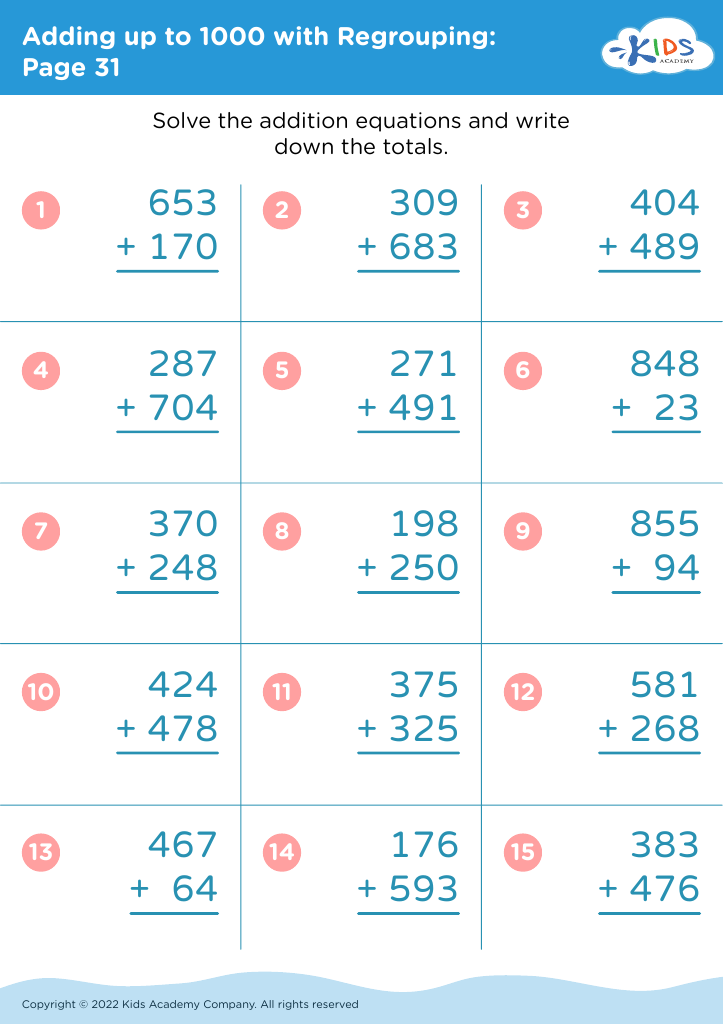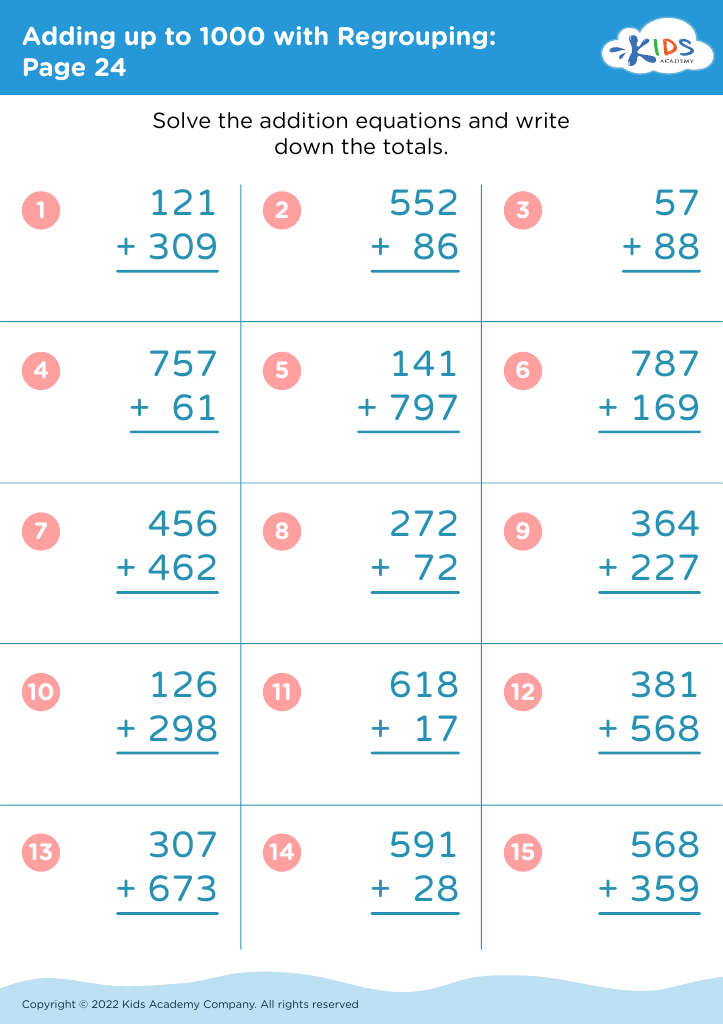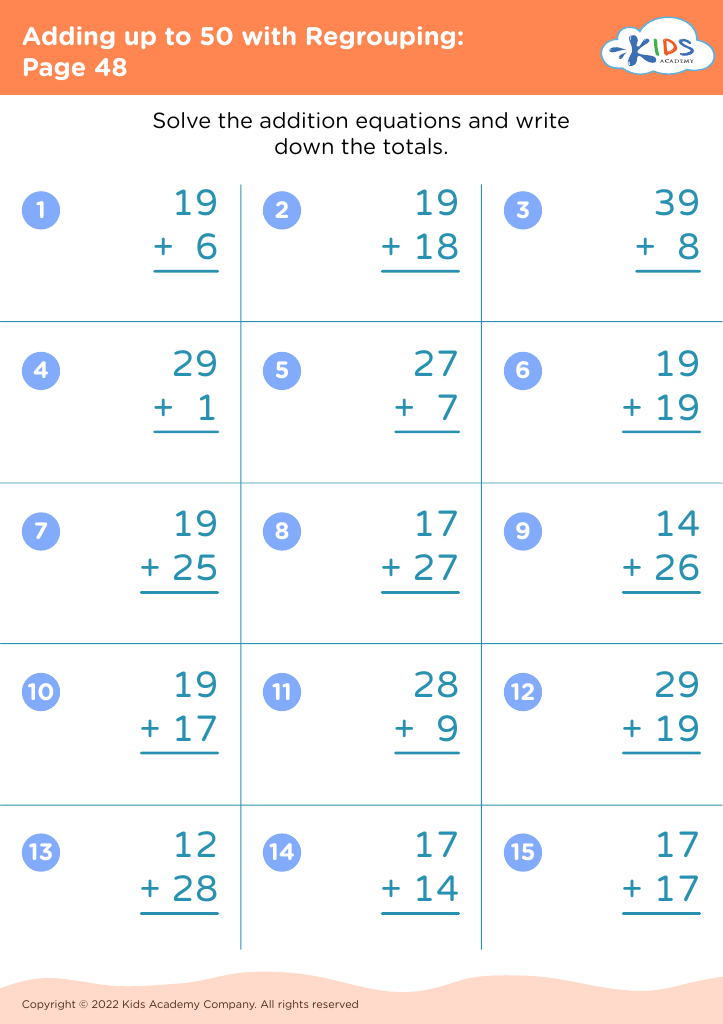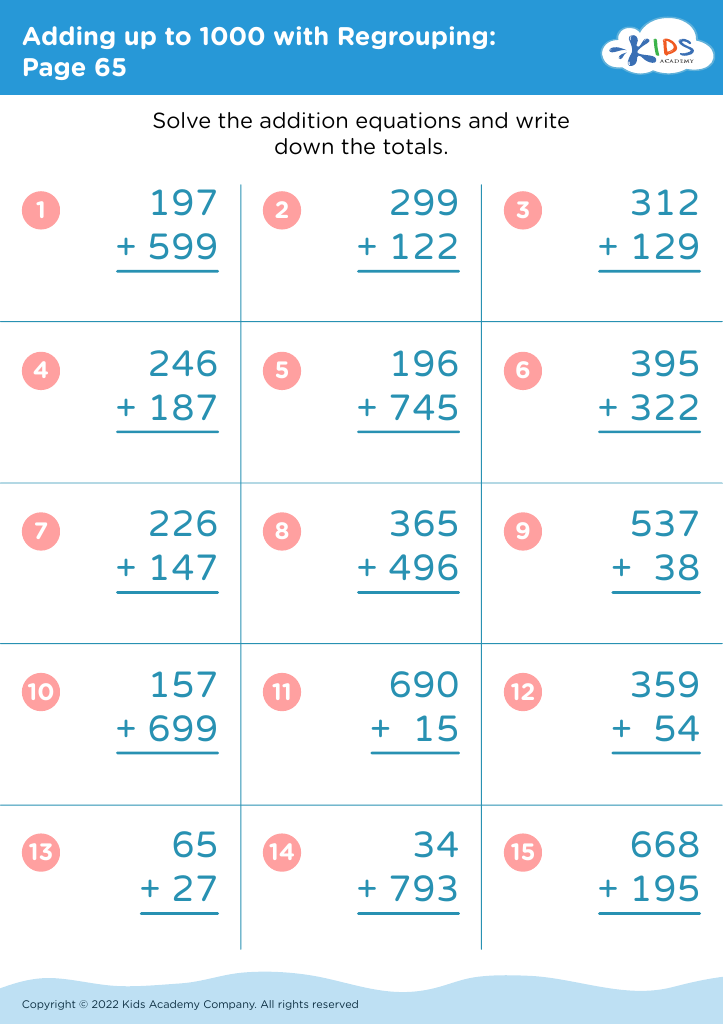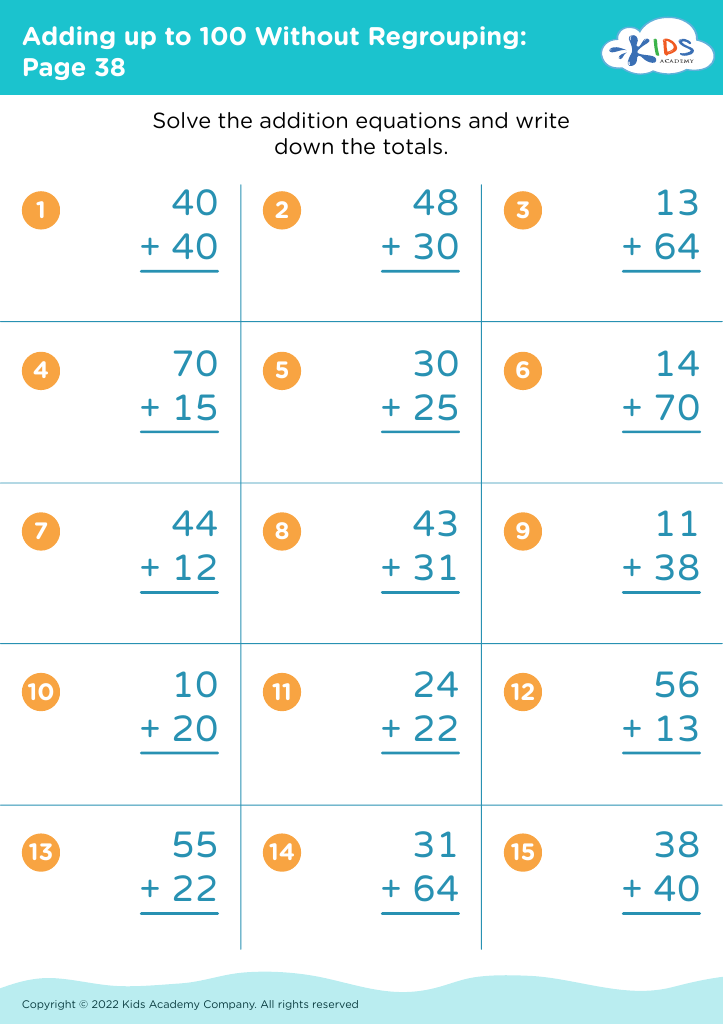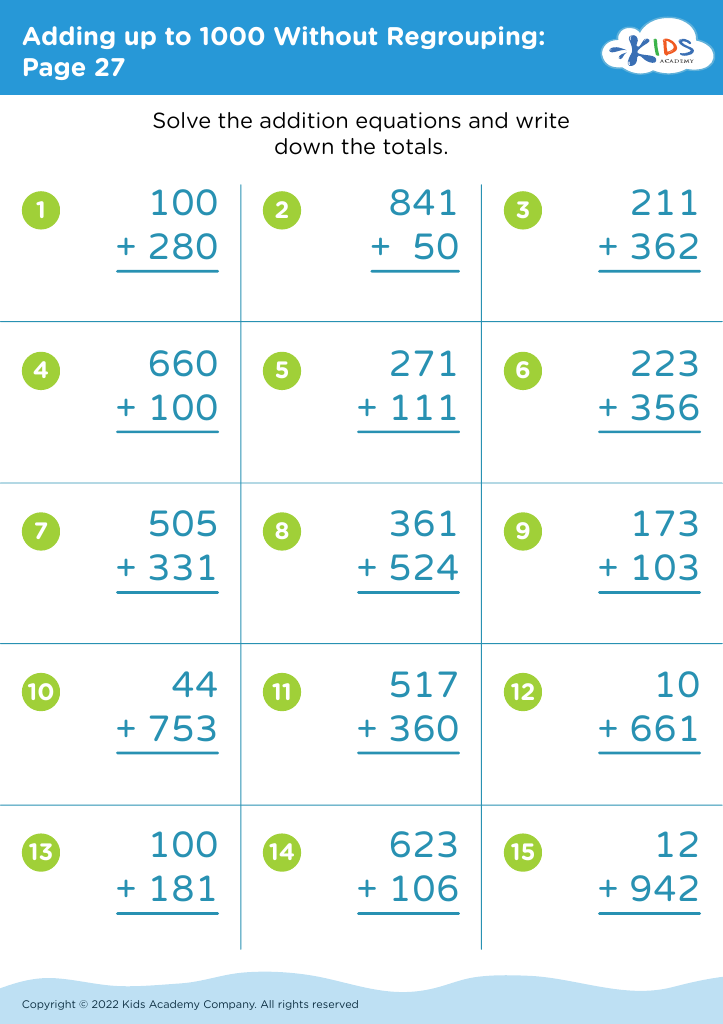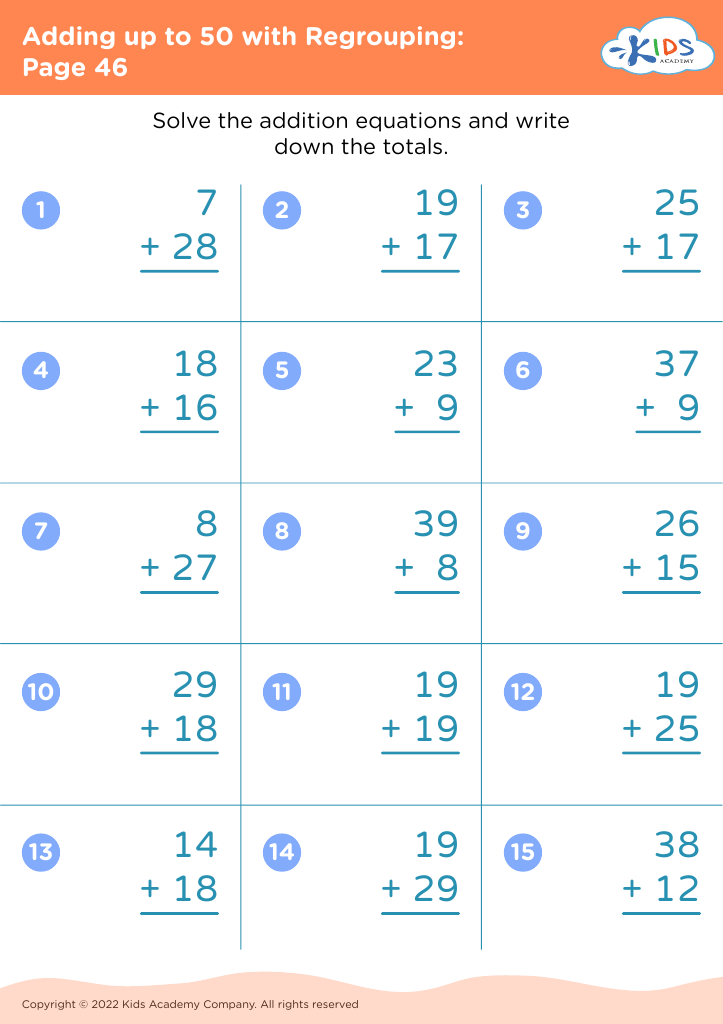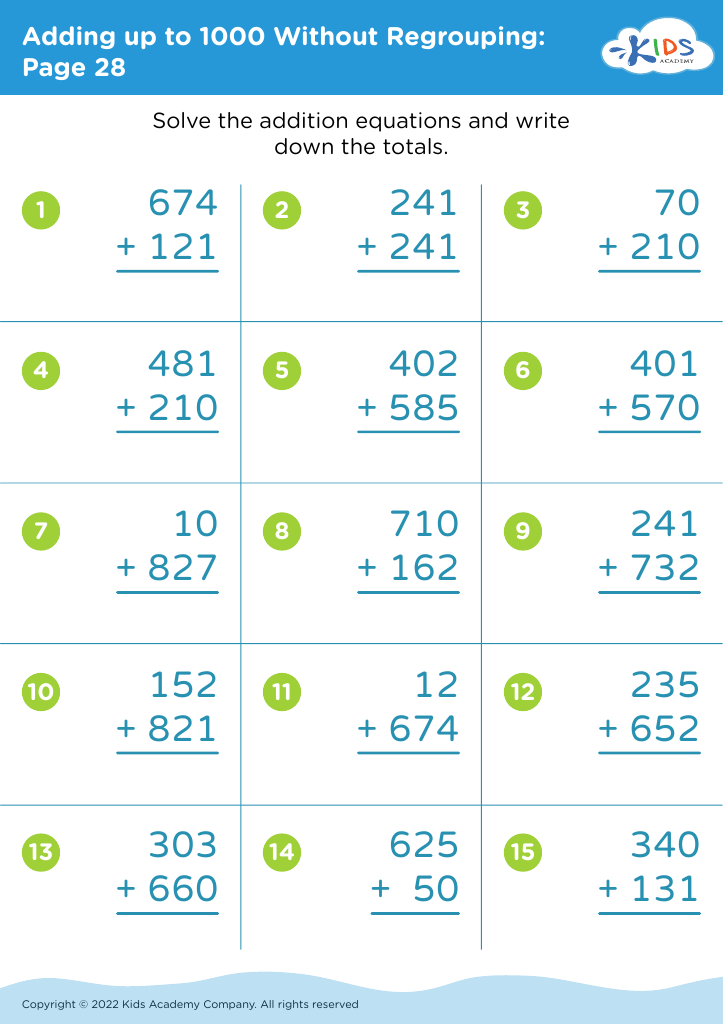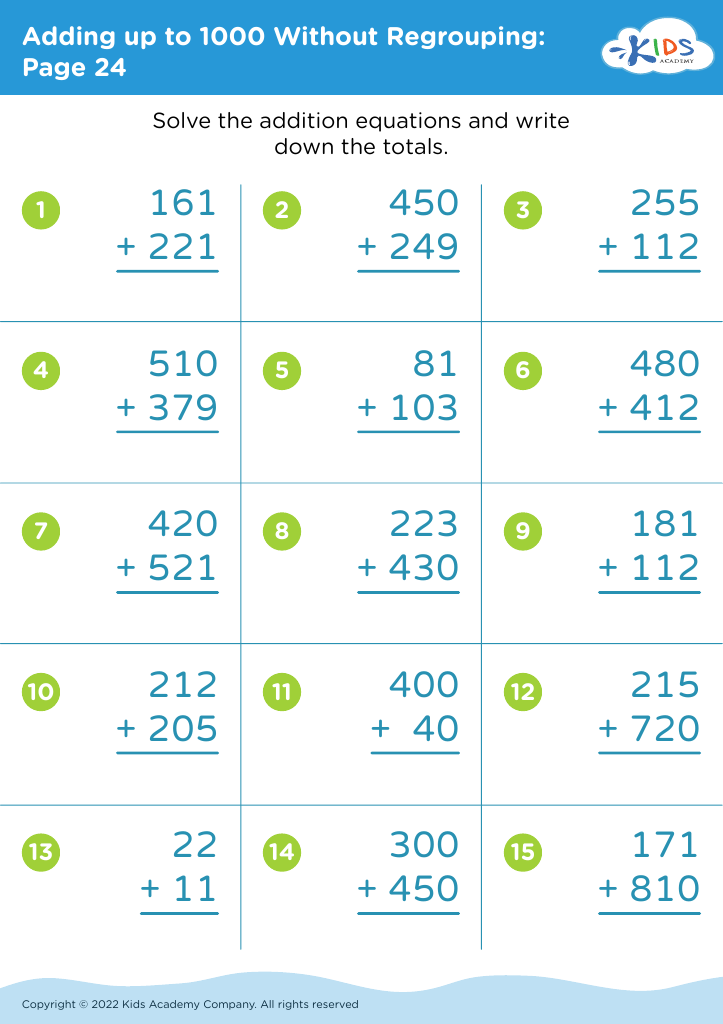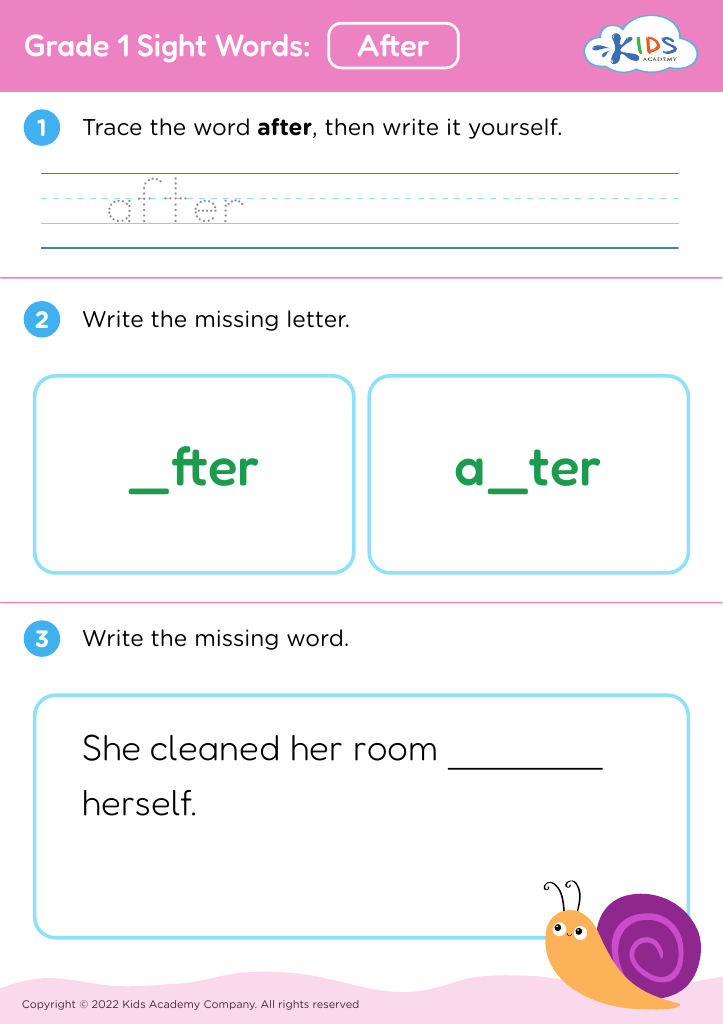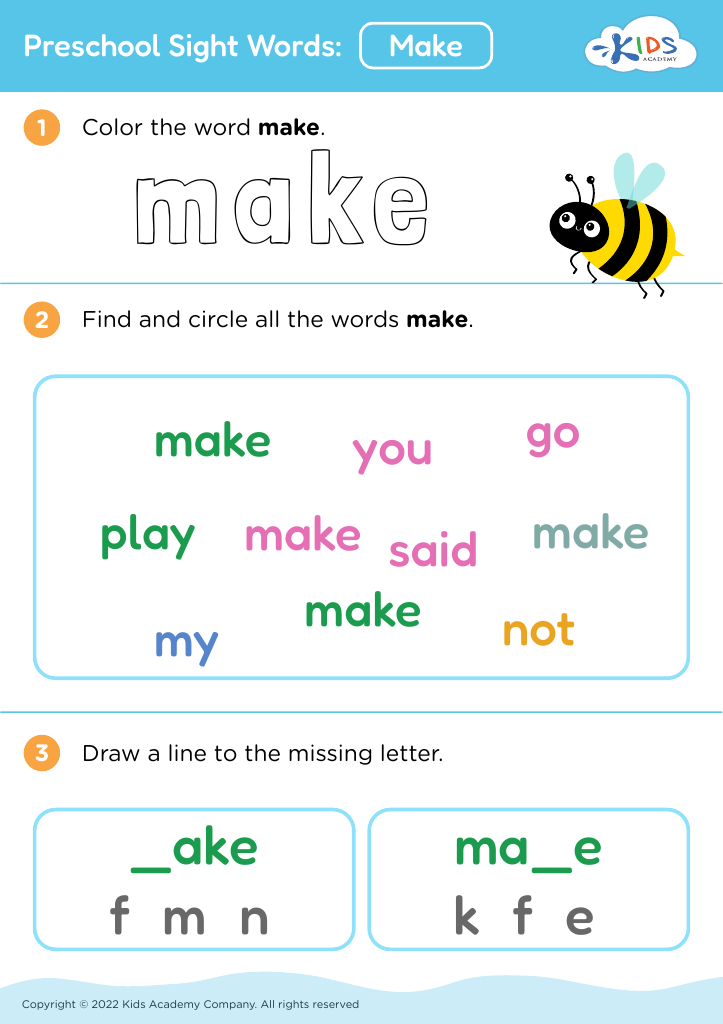Simplifying Fractions Worksheets for Ages 3-8
29 filtered results
-
From - To
Discover our engaging Simplifying Fractions Worksheets designed for children aged 3 to 8! These worksheets offer a fun and interactive way for young learners to grasp the concept of simplifying fractions. With colorful illustrations and age-appropriate exercises, kids can develop their mathematical skills through hands-on practice. Our resources are tailored to accommodate various learning styles, making them perfect for enriched classroom activities or at-home learning. Encourage your child's confidence in math and build a solid foundation with our easy-to-follow worksheets. Explore our collection today to make learning fractions enjoyable and effective!
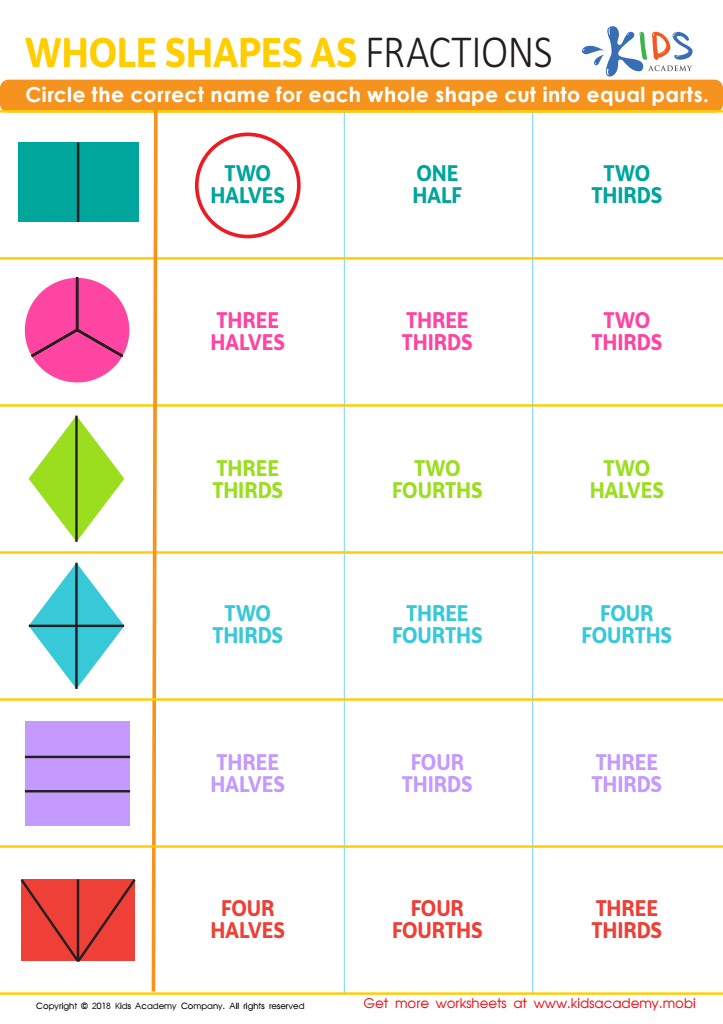

Whole Shapes as Fractions Worksheet
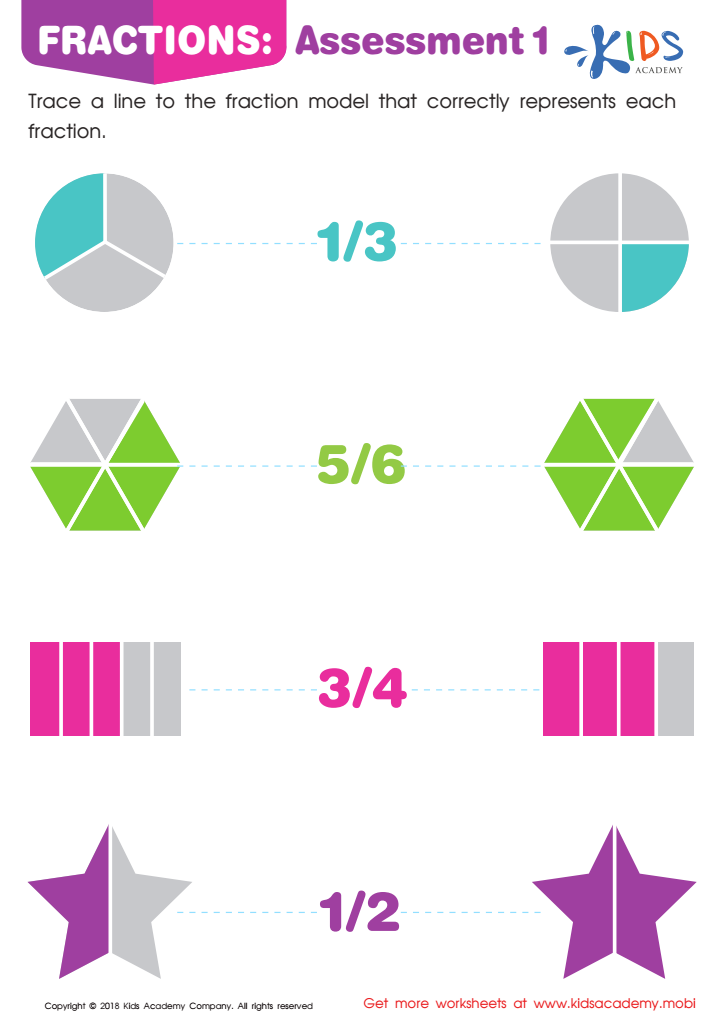

Fractions: Assessment 1 Worksheet
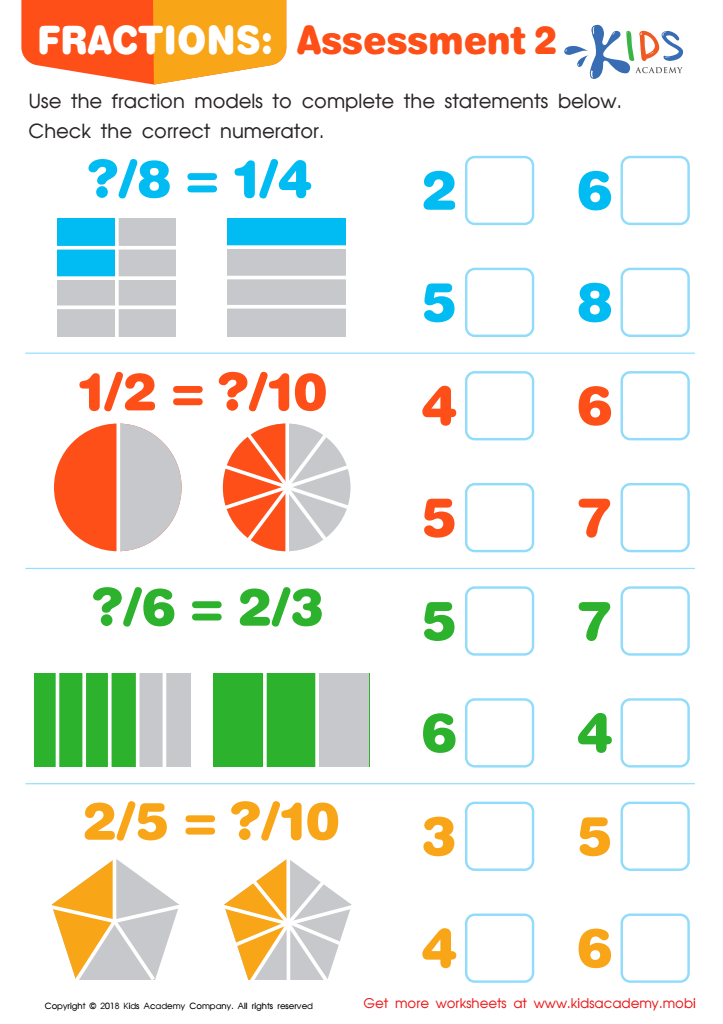

Fractions: Assessment 2 Worksheet
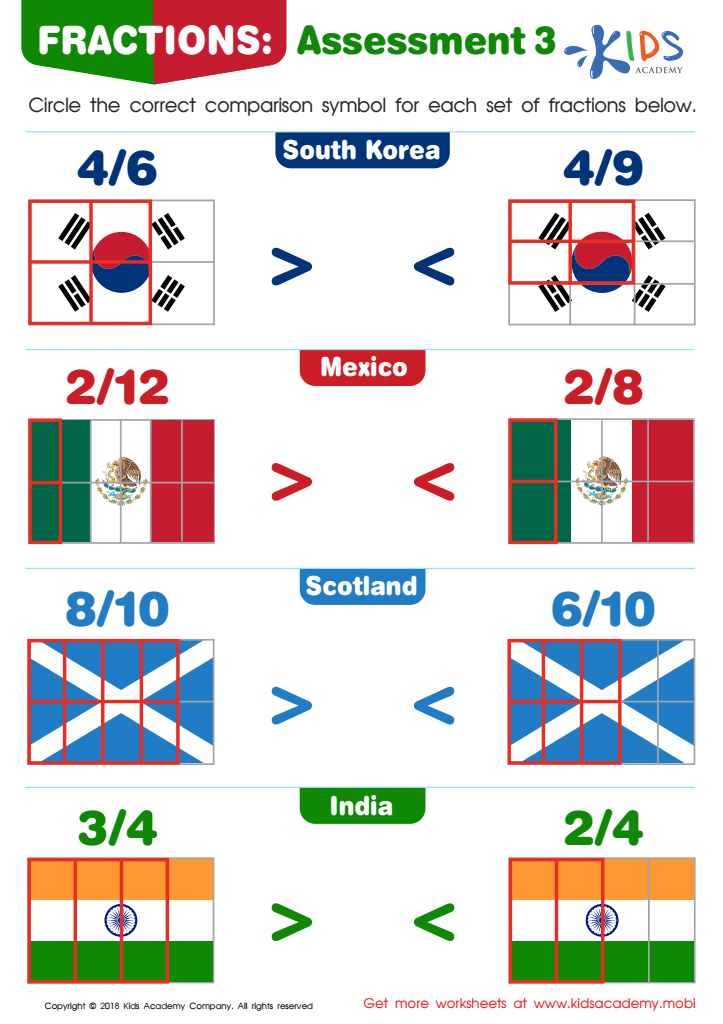

Fractions: Assessment 3 Worksheet
Understanding and simplifying fractions is a crucial foundational skill for young learners aged 3-8. As children at this age begin to explore basic mathematical concepts, introducing fractions helps them grasp the idea of part-to-whole relationships. Parents and teachers should care about simplifying fractions because these skills promote critical thinking and problem-solving abilities. Simplifying fractions also enhances children's number sense, allowing them to compare, combine, and operate with fractions more proficiently later on.
At this stage, children are naturally curious and eager to learn through hands-on experiences. Engaging with fractions through real-life examples—like dividing pizza slices or sharing toys—makes learning meaningful and relatable. This approach fosters a positive attitude towards mathematics, setting the foundation for more complex mathematical concepts in the future.
Moreover, simplifying fractions can aid in developing perseverance and attention to detail, as children learn to reduce fractions to their simplest form. This process encourages them to recognize patterns and apply logical reasoning, skills that are beneficial beyond mathematics. Ultimately, by emphasizing the importance of simplifying fractions early in education, parents and teachers equip children with essential tools that enhance their overall mathematical competence and confidence for years to come.
 Assign to My Students
Assign to My Students
